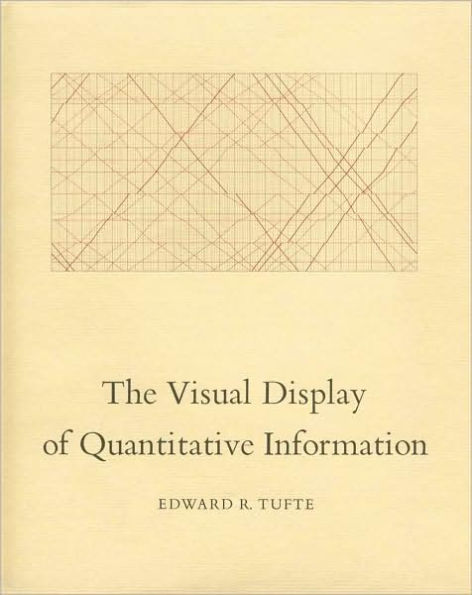Data graphics visually display measured quantities by means of the combined use of points, lines, a coordinate system, numbers, symbols, words, shading, and color.
The use of abstract, non-representational pictures to show numbers is a surprisingly recent invention, perhaps because of the diversity of skills required-the visual-artistic, empirical-statistical, and mathematical. It was not until 1750-1800 that statistical graphicslength and area to show quantity, time-series, scatterplots, and multivariate displays-were invented, long after such triumphs of mathematical ingenuity as logarithms, Cartesian coordinates, the calculus, and the basics of probability theory. The remarkable William Playfair (1759-1823 developed or improved upon nearly all the fundamental graphical designs, seeking to replace conventional tables of numbers with the systematic visual representations of his "linear arithmetic."
Modern data graphics can do much more than simply substitute for small statistical tables. At their best, graphics are instruments for reasoning about quantitative information. Often the most effective way to describe, explore, and summarize a set of numberseven a very large set-is to look at pictures of those numbers. Furthermore, of all methods for analyzing and communicating statistical information, well-designed data graphics are usually the simplest and at the same time the most powerful.
The first part of this book reviews the graphical practice of the two centuries since Playfair. The reader will, I hope, rejoice in the graphical glories shown in Chapter 1 and then condemn the lapses and lost opportunities exhibited in Chapter 2. Chapter 3, on graphical integrity andsophistication, seeks to account for these differences in quality of graphical design.
The second part of the book provides a language for discussing graphics and a practical theory of data graphics. Applying to most visual displays of quantitative information, the theory leads to changes and improvements in design, suggests why some graphics might be better than others, and generates new types of graphics. The emphasis is on maximizing principles, empirical measures of graphical performance, and the sequential improvement of graphics through revision and editing. Insights into graphical design are to be gained, I believe, from theories of what makes for excellence in art, architecture, and prose.
This is a book about the design of statistical graphics and, as such, it is concerned both with design and with statistics. But it is also about how to communicate information through the simultaneous presentation of words, numbers, and pictures. The design of statistical graphics is a universal matter-like mathematics-and is not tied to the unique features of a particular language. The descriptive concepts (a vocabulary for graphics) and the principles advanced apply to most designs. I have at times provided evidence about the scope of these ideas, by showing how frequently a principle applies to (a random sample of) news and scientific graphics.
Each year, the world over, somewhere between goo billion (9 X 10 and 2 trillion (2 X 1012) images of statistical graphics are printed. The principles of this book apply to most of those graphics. Some of the suggested changes are small, but others are substantial, with consequences for hundreds of billions of printed pages.
But I hope also that the book has consequences for the viewers and makers of those images-that they will never view or create statistical graphics the same way again. That is in part because we are about to see, collected here, so many wonderful drawings, those of Playfair, of Minard, of Marey, and, nowadays, of the computer.
Most of all, then, this book is a celebration of data graphics.





